Garmin Venu 2 Plus smartwatch review - outstanding sports functionality with smart lifestyle features
The great performance, looks and functionality of the outgoing Venu 2 with the well-executed addition of a speaker and microphone to support calls, voice assistant and music
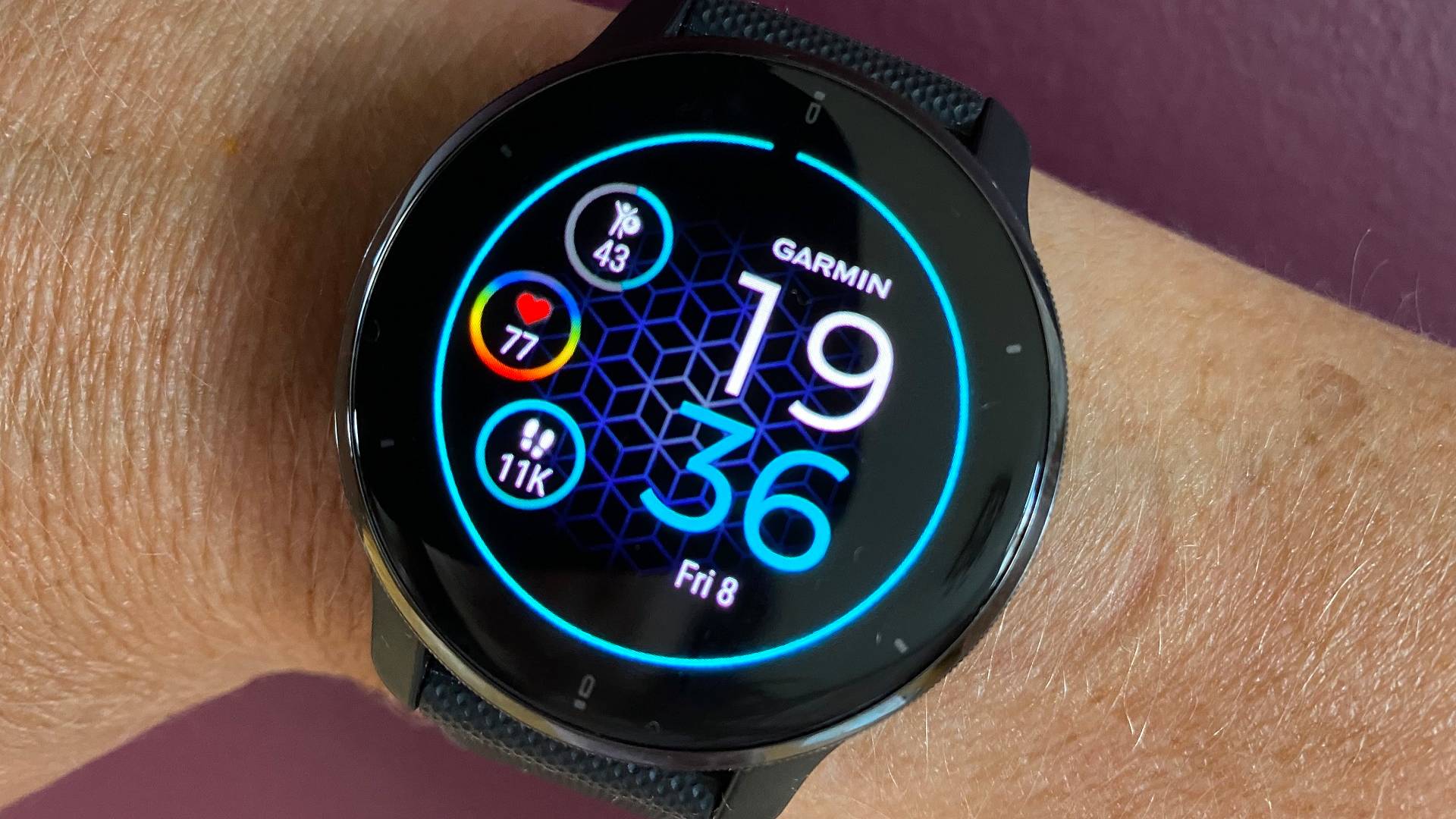
Garmin’s main aim with the Venu 2 Plus was to compete with smartwatches offering more than the Venu 2. The additions of on-board music, voice assistant and the ability to make and receive calls have certainly done this. The outstanding sport/fitness functionality of the Venu 2 remains wholly unchanged, fans of the Venu 2 may not deem the gains worth the upgrade; not everyone wants to talk into their wrist, right? However, it’s a great piece of technology that excels for day-to-day fitness and lifestyle tracking without feeling like these extra smart features have just been an after-thought to keep up with the Jones’. The Venu 2 Plus is complemented by Garmin's Connect App. For those who haven't experienced it, analysis is outstanding and you'll struggle to find anything quite as comprehensive.
-
+
Long battery life
-
+
Excellent analysis and feedback
-
+
Onboard music
-
+
Fast recharge
-
+
Ability to make and receive calls
-
+
Clear display
-
+
Robust lens
- +
-
-
GPS takes longer than some to be found
- -
- -
You can trust Cycling Weekly.
I've had my hands on the Venu 2 Plus for over two months and feel like there's still a whole load of functions that I haven't had time to explore.
Read on to find out exactly what I think of this GPS smartwatch as I scratch the surface of a comprehensive smartwatch that delivers functionality, features and performance...
FIRST IMPRESSIONS
The first thing that struck me when I got my hands on the Venu 2 Plus was the brightness and clarity of the screen. I’ve been testing the version with a slate stainless steel bezel, black case and black silicone strap - perhaps the dark surrounds make it appear even brighter. Lined up next to Garmin’s own Vivomove Sport smartwatch and their Forerunner 945, the contrast is striking. It can light the way out of a darkened room!
If slate/black isn’t for you, you can opt for a silver bezel with a powder grey case, cream gold bezel with an ivory case, or a slate bezel with a slate case… the choices don’t stop there as there are 20 different styles of strap for you to choose from - Garmin certainly can’t be accused of offering limited options!
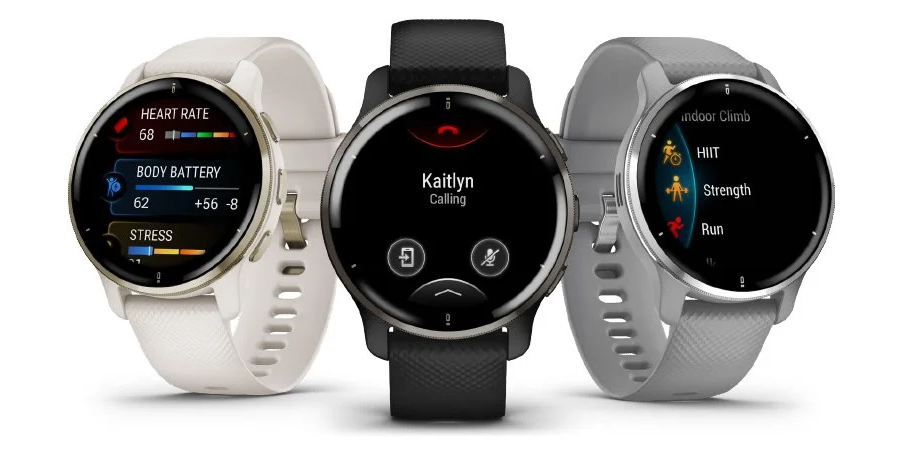
I’ve had the watch on pretty much 24/7 since receiving it, never feeling like it was making my wrist sweaty or irritated while exercising. The strap seems pretty robust but it’s good to know that spares are available and a whole unit isn’t ‘lost’ if the strap breaks, equally, it's nice to have the option of swapping over straps to create a different look 'just for a change', or for a different occasion.
The watch face has encountered some rough surfaces, I dare to add this includes being brushed against a brick wall! The Corning Gorilla Glass 3 lens is thoroughly impressive, showing zero signs of wear and genuinely looking like it’s just come out of the box.
It can be set to light up with a gesture of the wrist, or to be on all the time (which heavily impacts battery life); the former has been reliably responsive. Time-out and brightness are also adjustable, with the useful addition of separate settings during an activity. The ‘gesture’ and ‘always on’ are disabled during your pre-set sleep window so there’s no risk of a blinding screen in the middle of the night!
The latest race content, interviews, features, reviews and expert buying guides, direct to your inbox!
With only three buttons to control pretty much everything, I’ve found it easier to get to grips with than the Forerunner 945. Once into menus, the touchscreen takes over and it’s as good as any premium phone screen, even with (touchscreen compatible) gloves.
LOOK AND FIT
The watch isn’t as chunky or imposing as the Forerunner 945, despite weighing exactly the same. Some of this is down to only having three (lower profile) buttons down one side, the FR945's 5 occupy both sides.
The Venu 2 Plus is certainly not as unobtrusive or low profile as the Vivomove Sport, so it might be considered a hindrance to clothing that is very tight around the forearm.
In my opinion it’s a happy medium; a screen that’s perfectly big enough to read without issue, even when you’re running or riding.
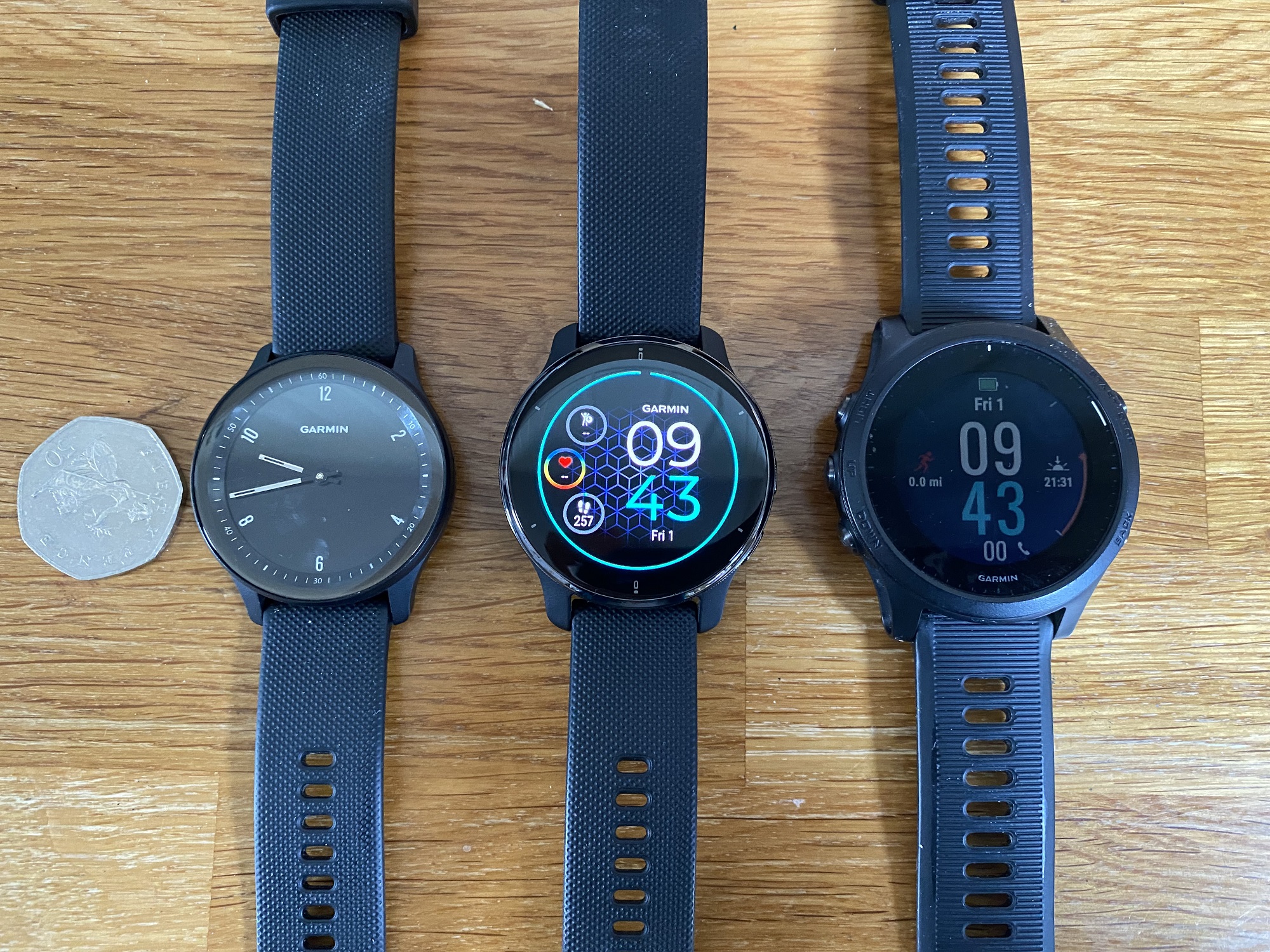
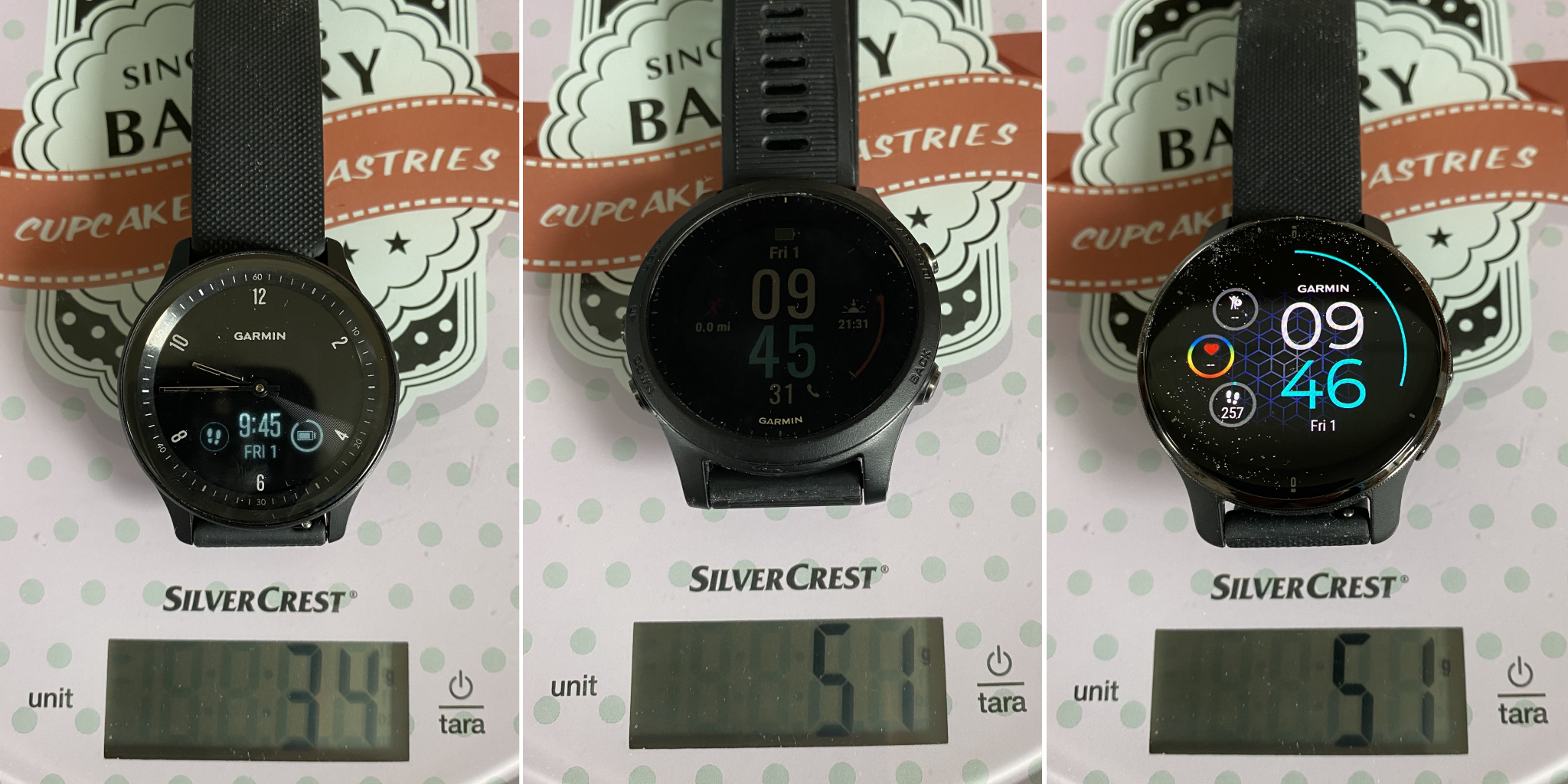
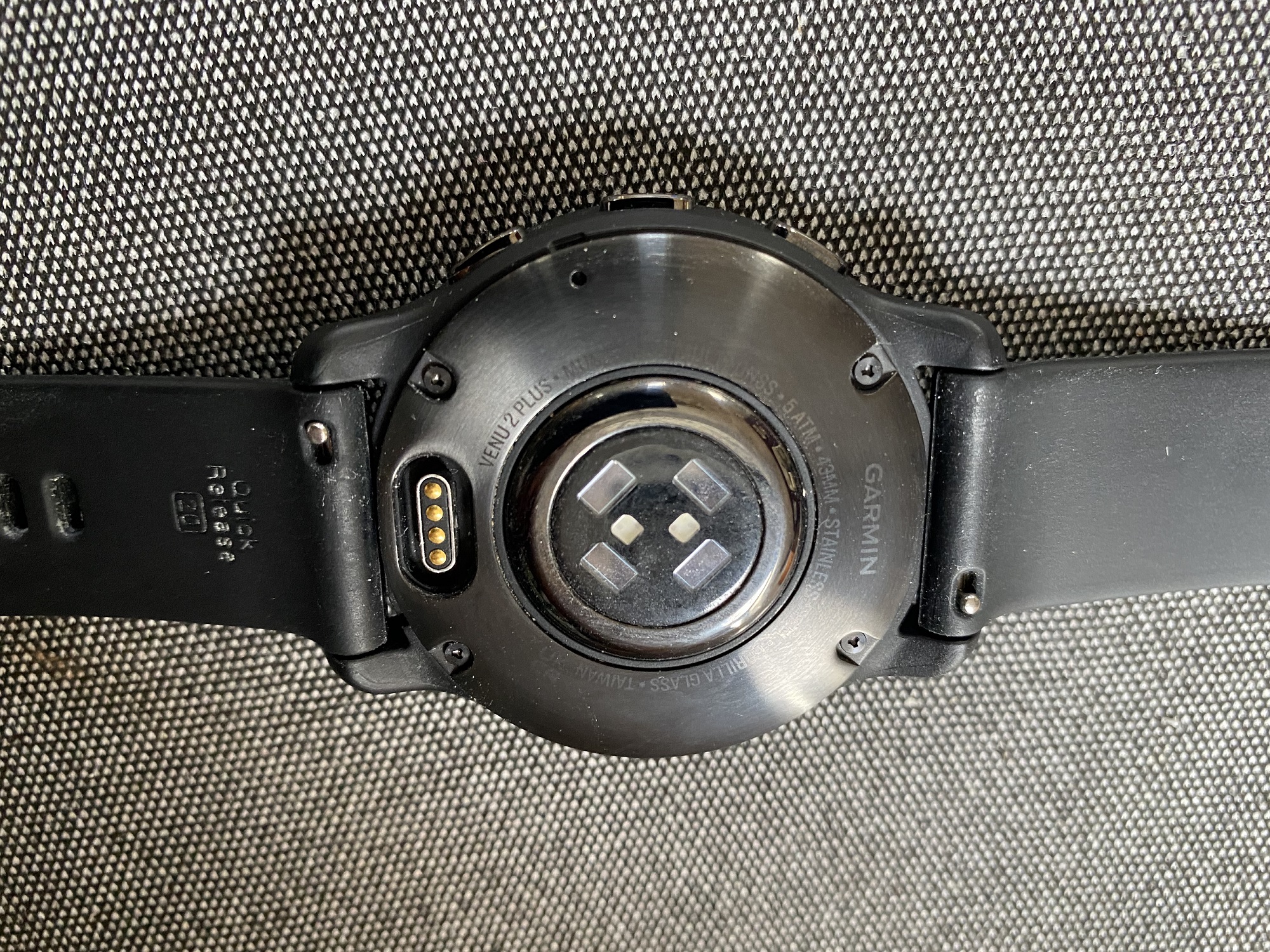
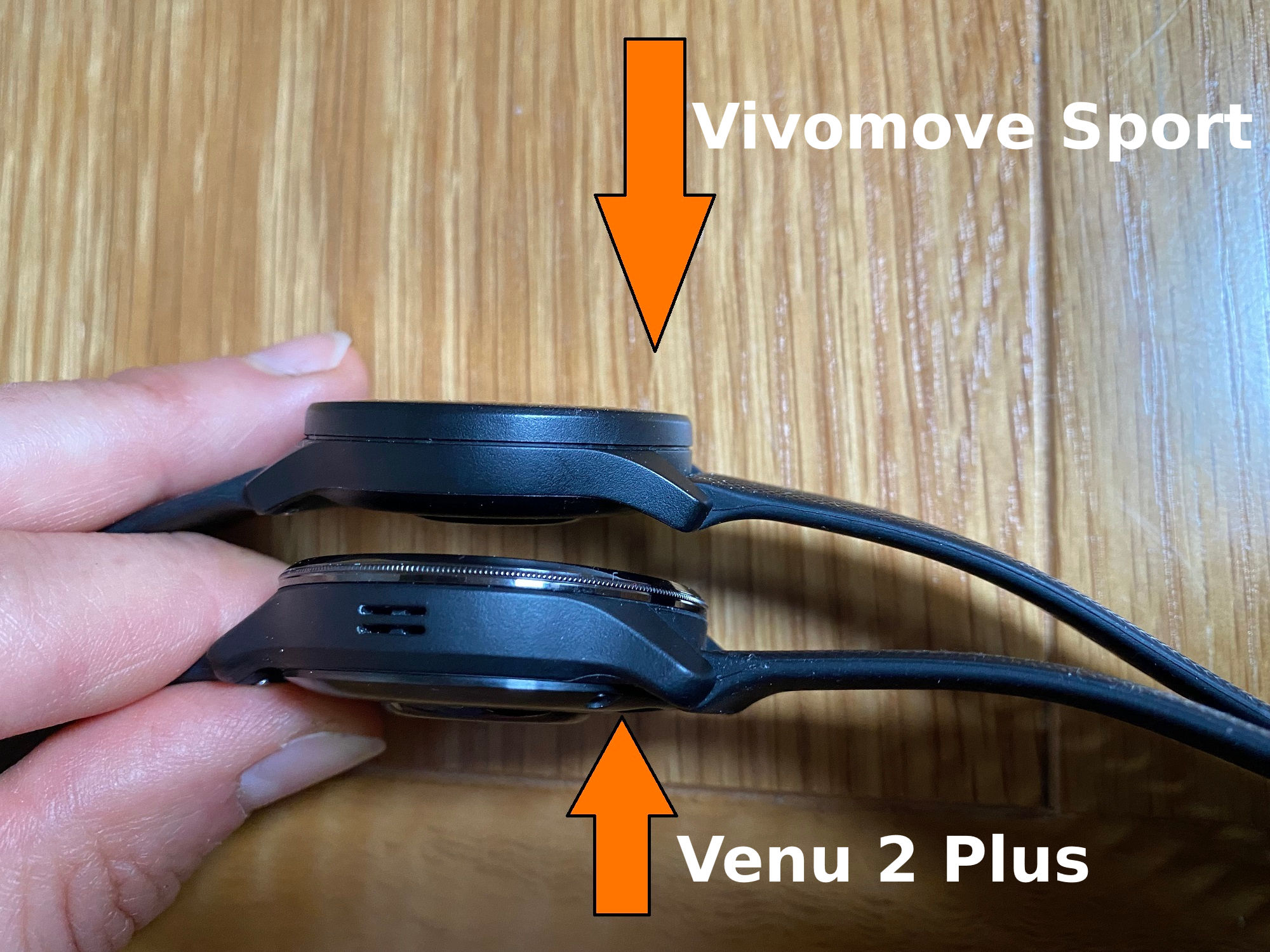
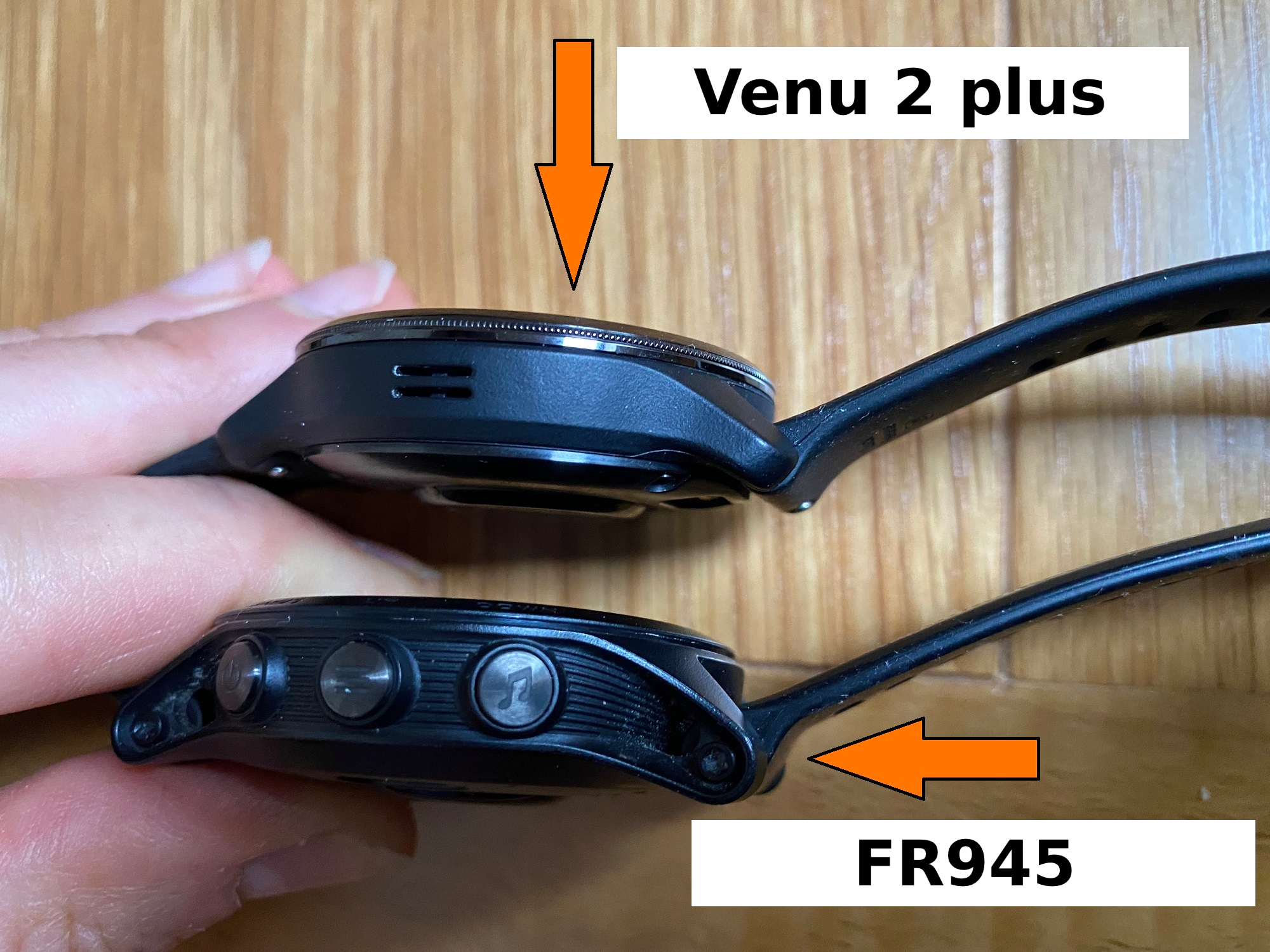
The screen's wholly customisable and you’ll be overwhelmed with the options available, you could spend hours creating your own design, messing around with data fields, backgrounds and colourways. It’s very easy to do, so deciding what best suits you over time and changing within a few seconds is no problem (the Garmin IQ store should be accessed for the full range, though pre-loaded options are likely enough for most). Some options even use ‘live’ imagery (the rainy background on the penultimate image in the gallery), this naturally reduces battery life.
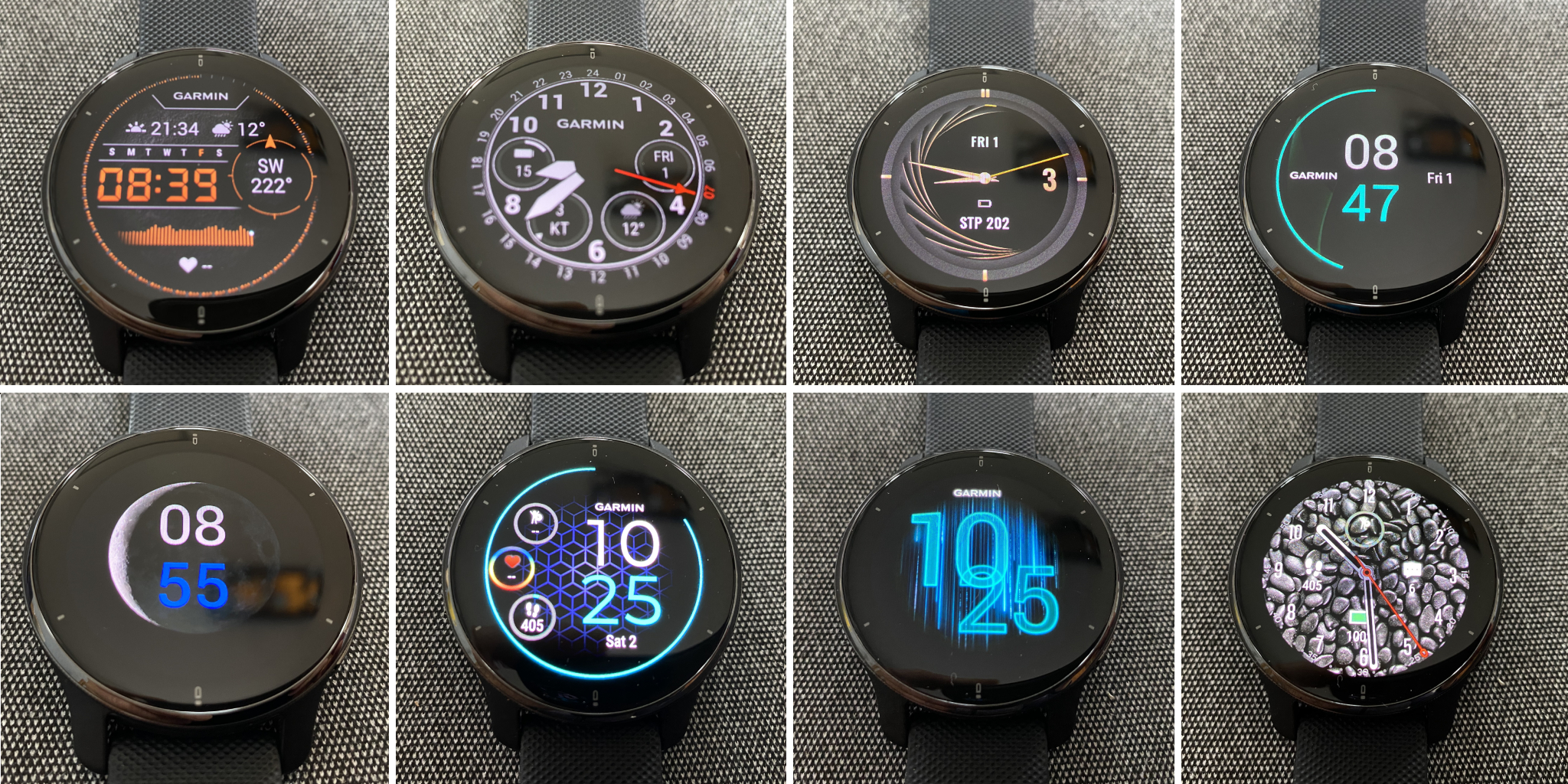
CHARGING AND BATTERY LIFE
A supplied proprietary cable takes the watch from 'critical' to full in about an hour. Some might find it disappointing that there’s no wireless charging, or even a common port - you certainly won't want to lose this cable. However, I’d say the re-charge time goes a long way to make up for this, as does the run time…
Unsurprisingly, run times depend heavily on how you use the watch - so music, using the GPS for activities and broadcasting your heart rate all impact heavily on the battery. To give you an idea, a ride of three hours (with GPS recording) used 13% of the battery.
I’ve not used it loads to record cycling (more on that later) but certainly for all my running. I’ve been needing to charge it, on average, once every seven days. Garmin claims that the battery can last nine days in smartwatch mode, up to 24 hours in GPS mode and up to 8 hours in GPS mode with music.
A ‘low battery warning’ reminds you to recharge and, until you do, the watch can go into battery saving mode - a minimal (but perfectly legible) display as seen below with several functions disabled or 'dumbed-down'.
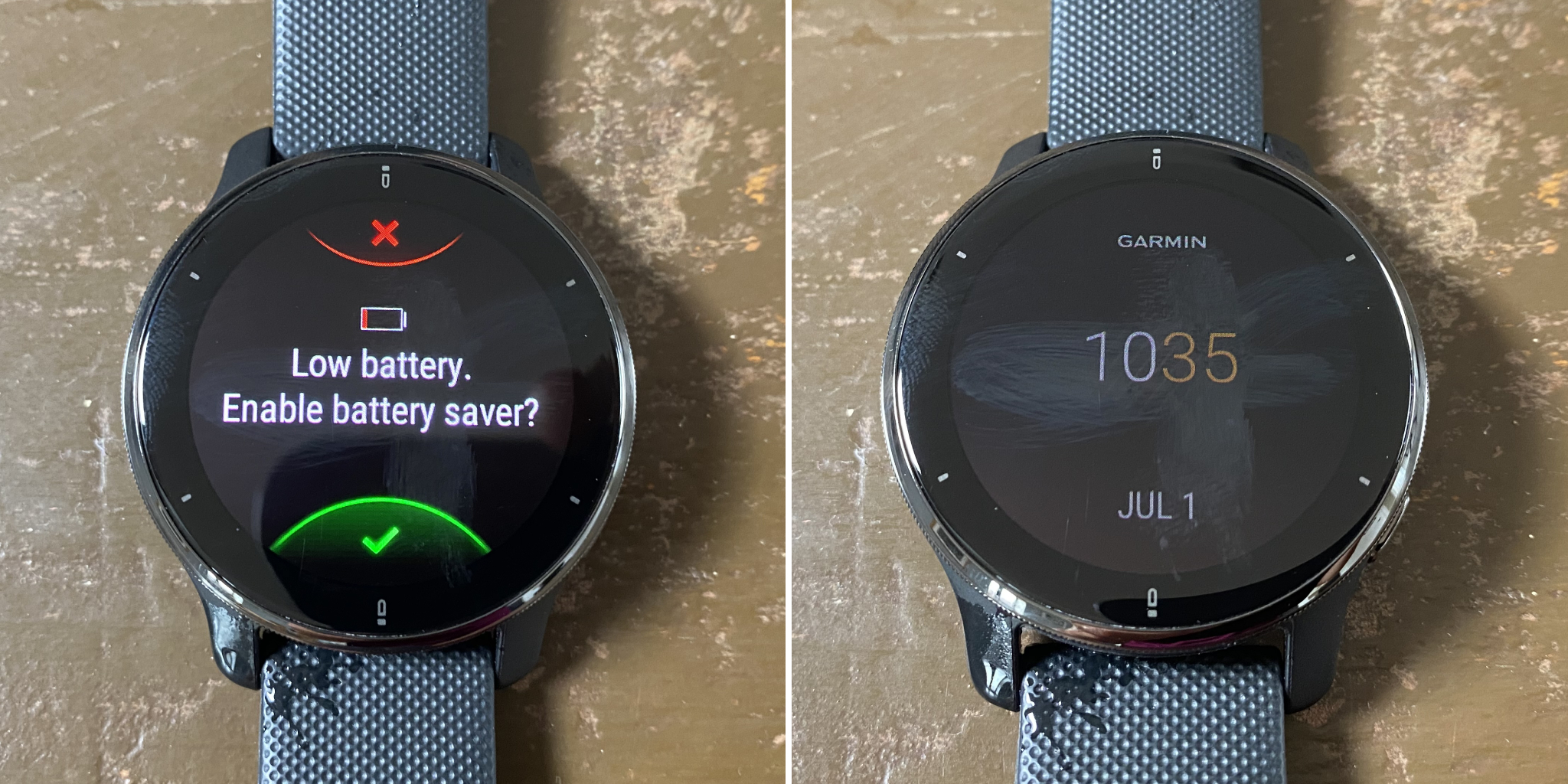
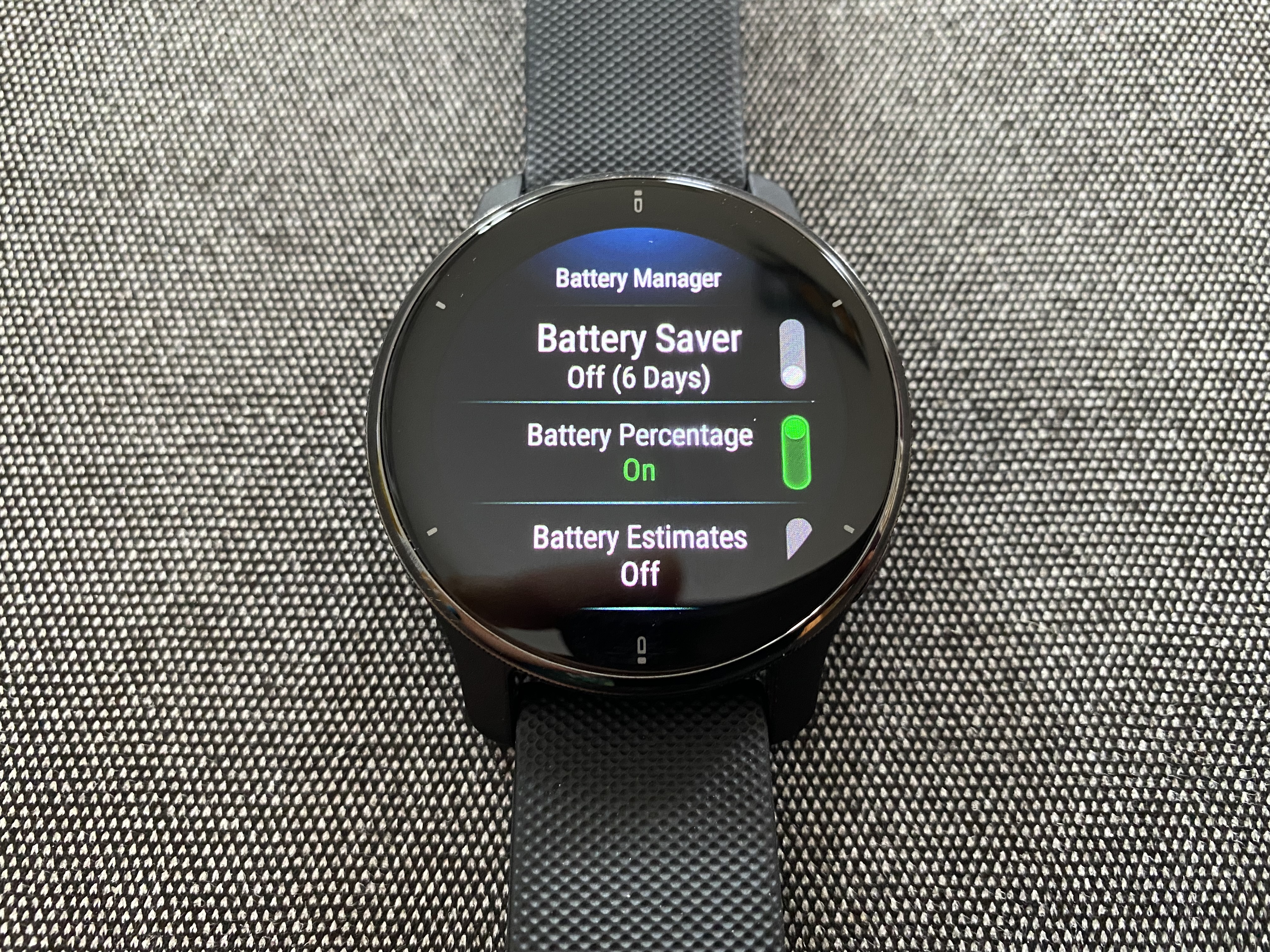
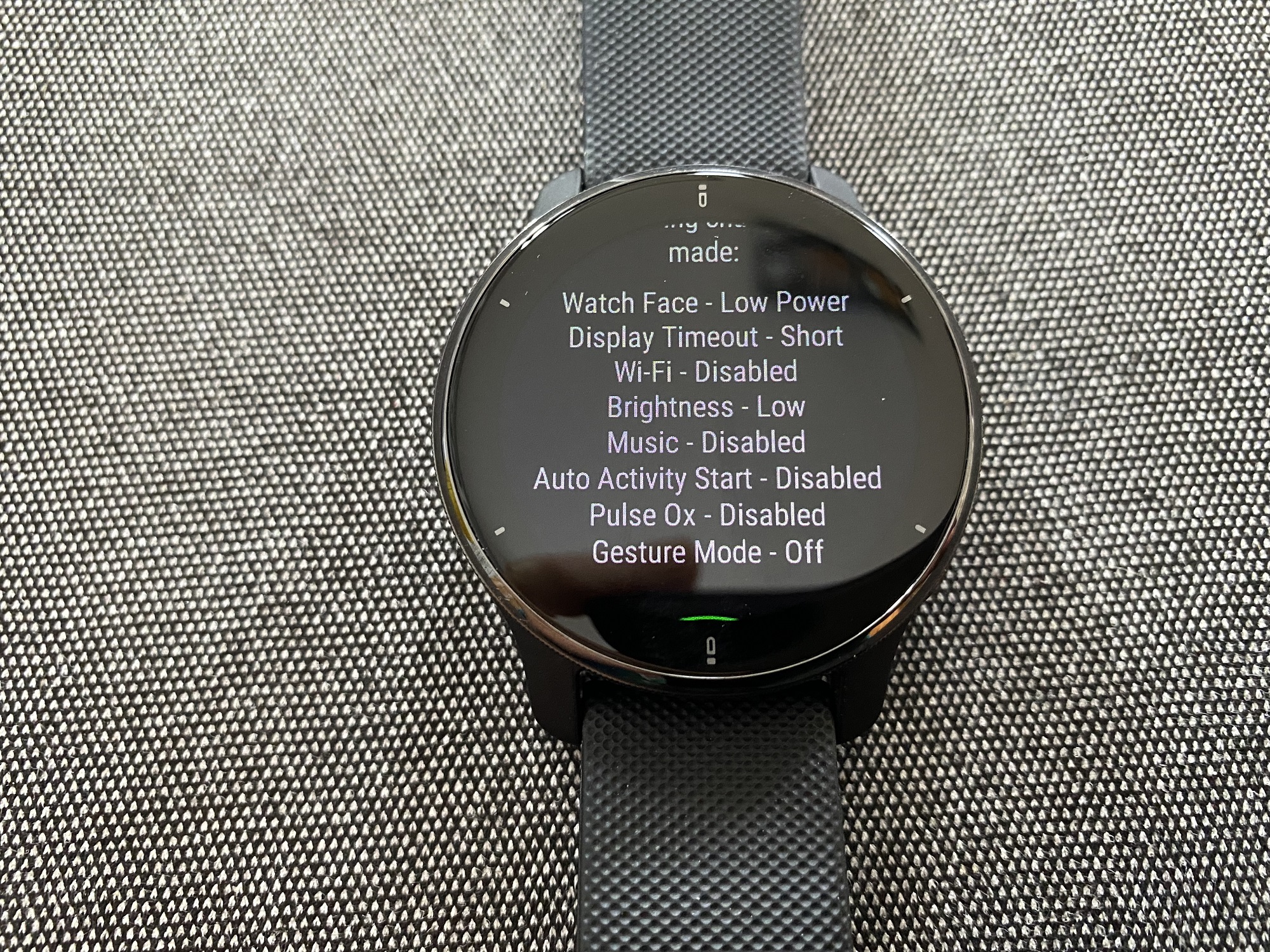
NEW CUSTOMISATION FEATURES
I’ve mentioned customising looks and ‘gesture’/’always on’, things go beyond that in terms of personal preferences for settings and functions.
Short cuts to a variety of controls can be set up so that a press of the middle button takes you straight to your most used functions, this is a new feature over the Venu 2. Here you can see some of the options available, with me opting to have music controls on a short cut. Setting up all of these 'preferences' is very intuitive, with the watch guiding you through processes efficiently and clearly. If things do get overwhelming, the online manual is well set out and very concise.
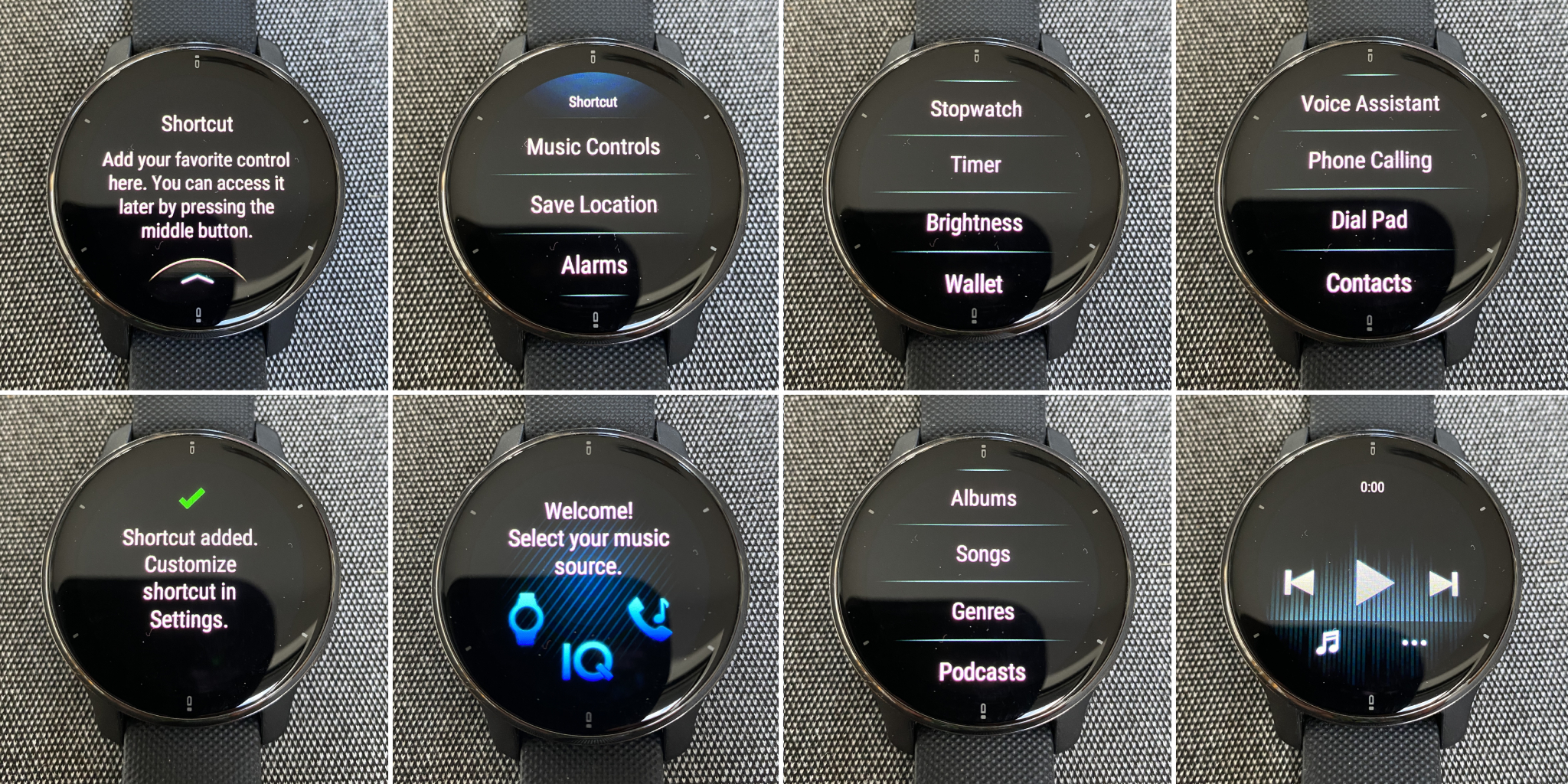
Since you rarely find yourself charging it, you genuinely forget about and it’s easy to be caught out with a low battery, particularly if you don’t have the capacity icon on the watch display (a swipe up brings it into view). Thankfully, a short burst of about 10 minutes (just enough to get changed and ready to exercise) can really make a difference; Garmin claim that it can add a day of smartwatch functioning, or an hour of GPS running. How good this is for the battery, I wouldn’t like to say.
EVERYTHING ON YOUR WRIST
Swipe up on the watch and you get to access a plethora of data and a handful of controls, Garmin call these ‘Glances’. While many are pre-loaded, there’s no surprise that you can customise the loop, from sleep stats, steps and calories to weather, notifications and activity history. There are no less than 25 options here. The Venu 2 Plus can be paired with Varia lights and cameras, these can be controlled on the watch here too.
A 'Glance' doesn’t have to stop there though, you can tap on the field to delve deeper into the analysis. It’s easy to read on the watch face, though if you struggle with small detail, it can be all accessed via the app too.
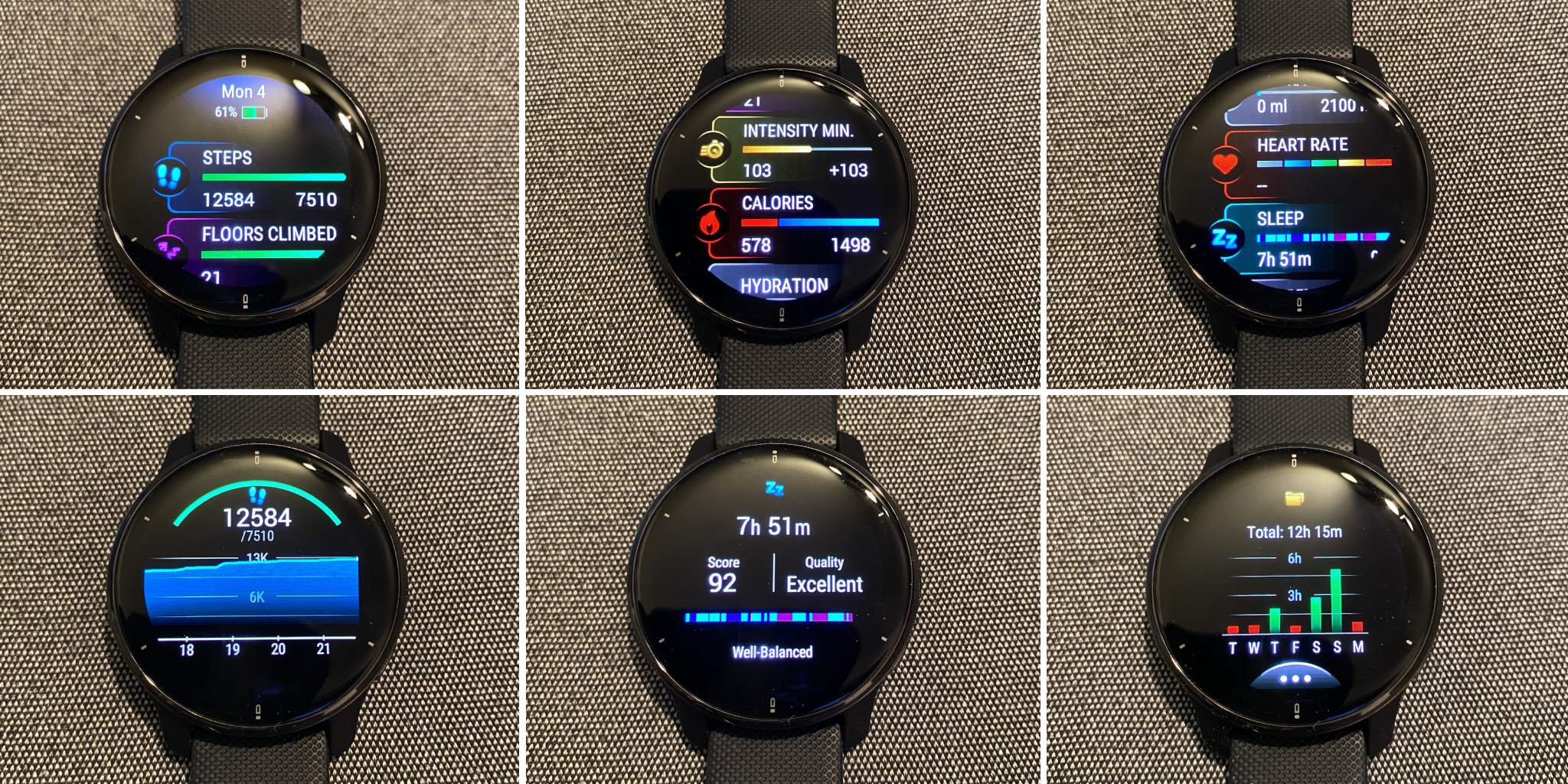
Syncing has never been a problem, though I've noted that the longer I leave between syncs, the longer they take, no surprise really. Given just how much I can see on the watch, I’ve tended not to sync as often as I would with something like the Vivomove Sport, consequently I could be waiting a while for all the data to appear in the app.
ACTIVITIES AND ANALYSIS
The Venu 2 Plus boasts all the same sport/fitness features as the Venu 2.
I’ve mainly made use of the cycling and running activity recording, however it's capable of recording so much more than just these two…
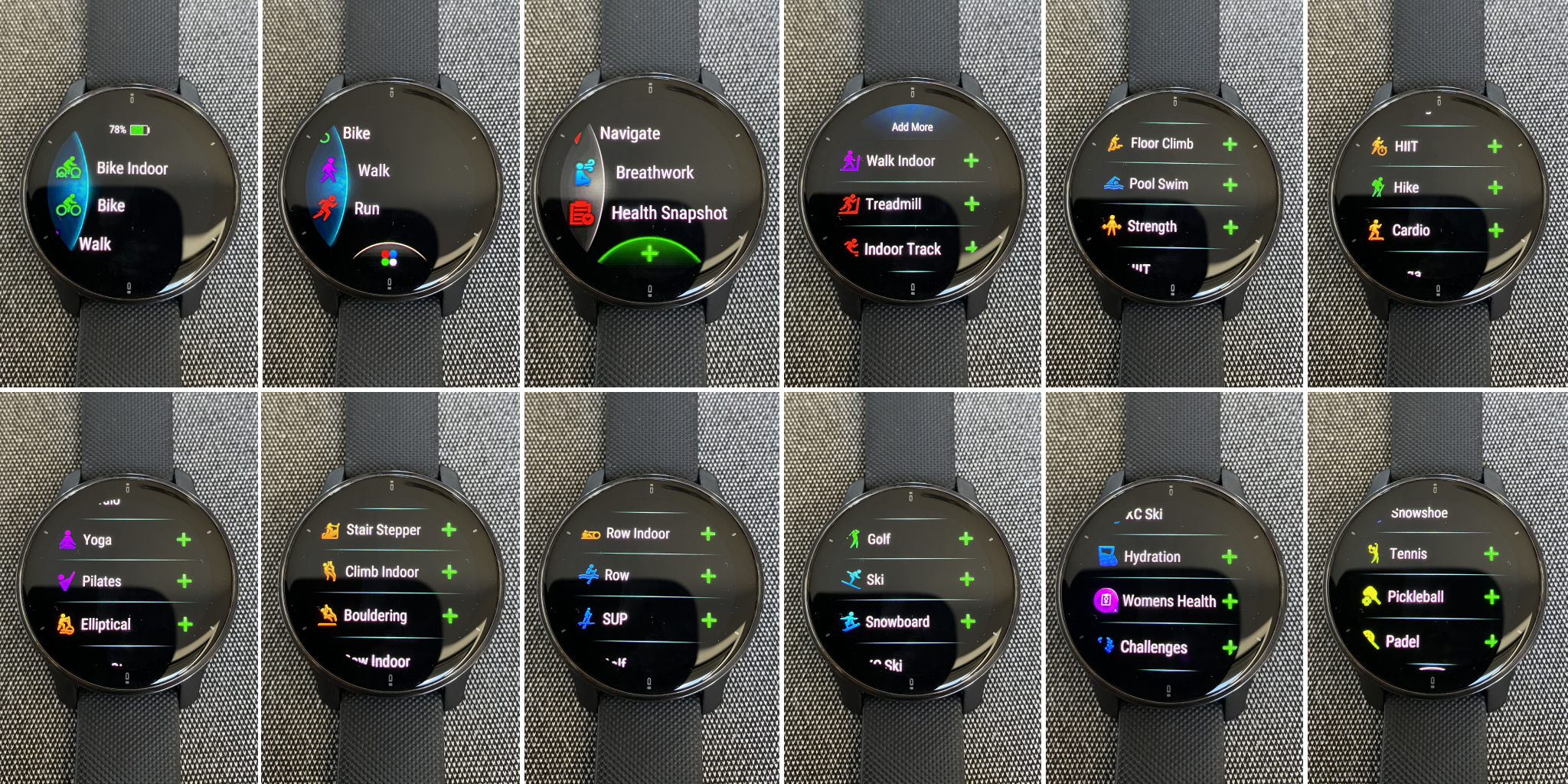
It's simple to record indoor or outdoor cycling and running activities, with options such as auto-pause, laps, heart rate zones all being customisable. Up to three data screens show your choice of metrics, with anything from one to four fields on each.
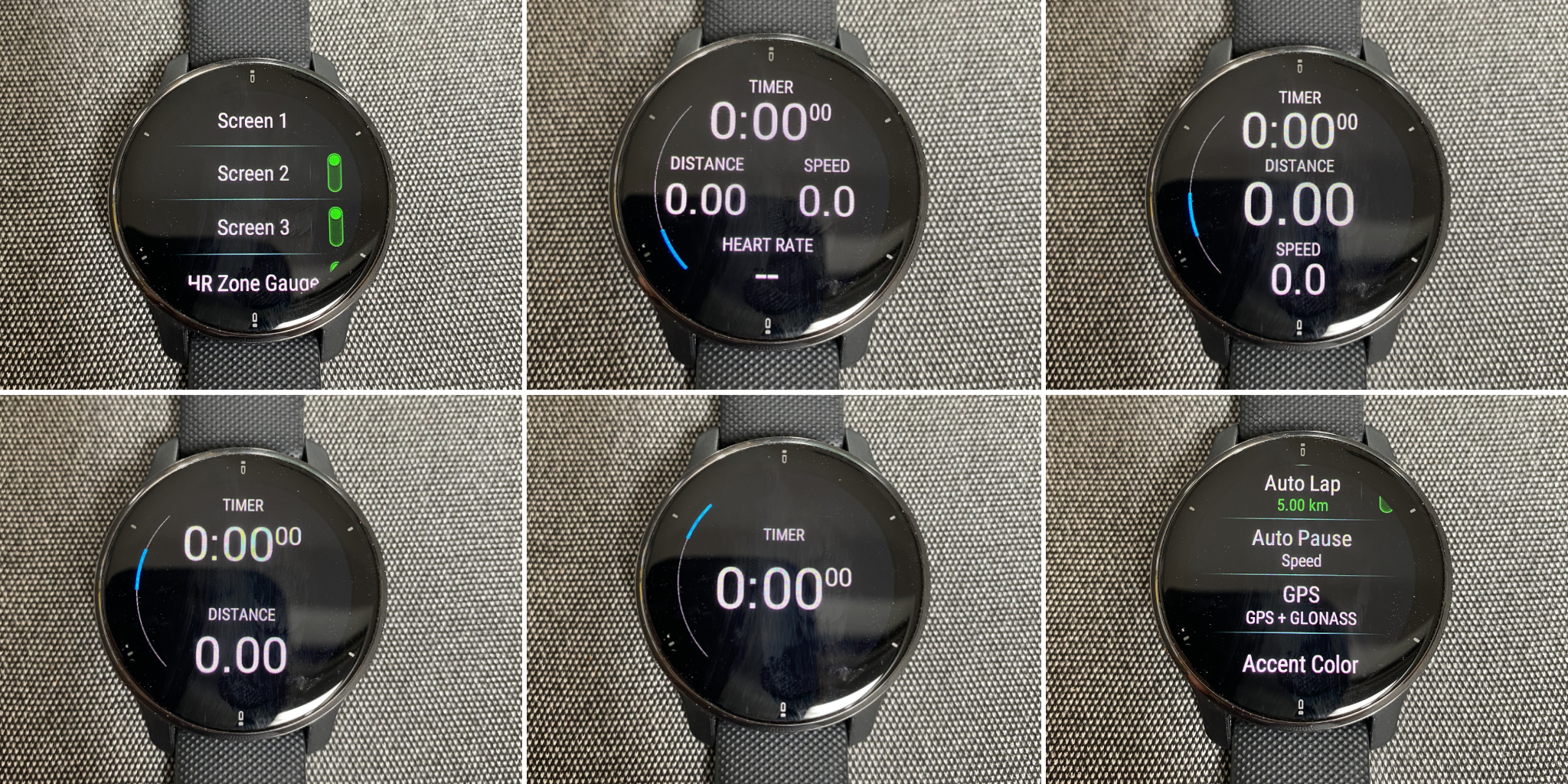
I’ve found the screen easy to read and tend to use the configuration that best suits the kind of ride/run I’m doing. I’m not a fan of scrolling when on the move, but it’s good to have that option. For this same reason, I’ve appreciated being able to broadcast my heart rate from the Venu 2 Plus. It’s naturally not as reliable as a chest strap, particularly on the bike; sprinting, climbing and interference from clothing can all affect the continuity of the broadcast.
The Venu 2 Plus supports a variety of both ANT+ and Bluetooth smart sensors, so headphones (Bluetooth audio devices), heart rate sensors, speed/cadence, Foot Pod, Tempe (Temperature), ANT+ cycling lights, ANT+ radar, and golf club sensors can all be paired.
The watch remains super sensitive to gesture when you are running and riding. Seeing what's on the screen has never been a problem in any kind of light conditions. The coloured surround, indicating that the timer has auto-paused, is exceptionally vivid.
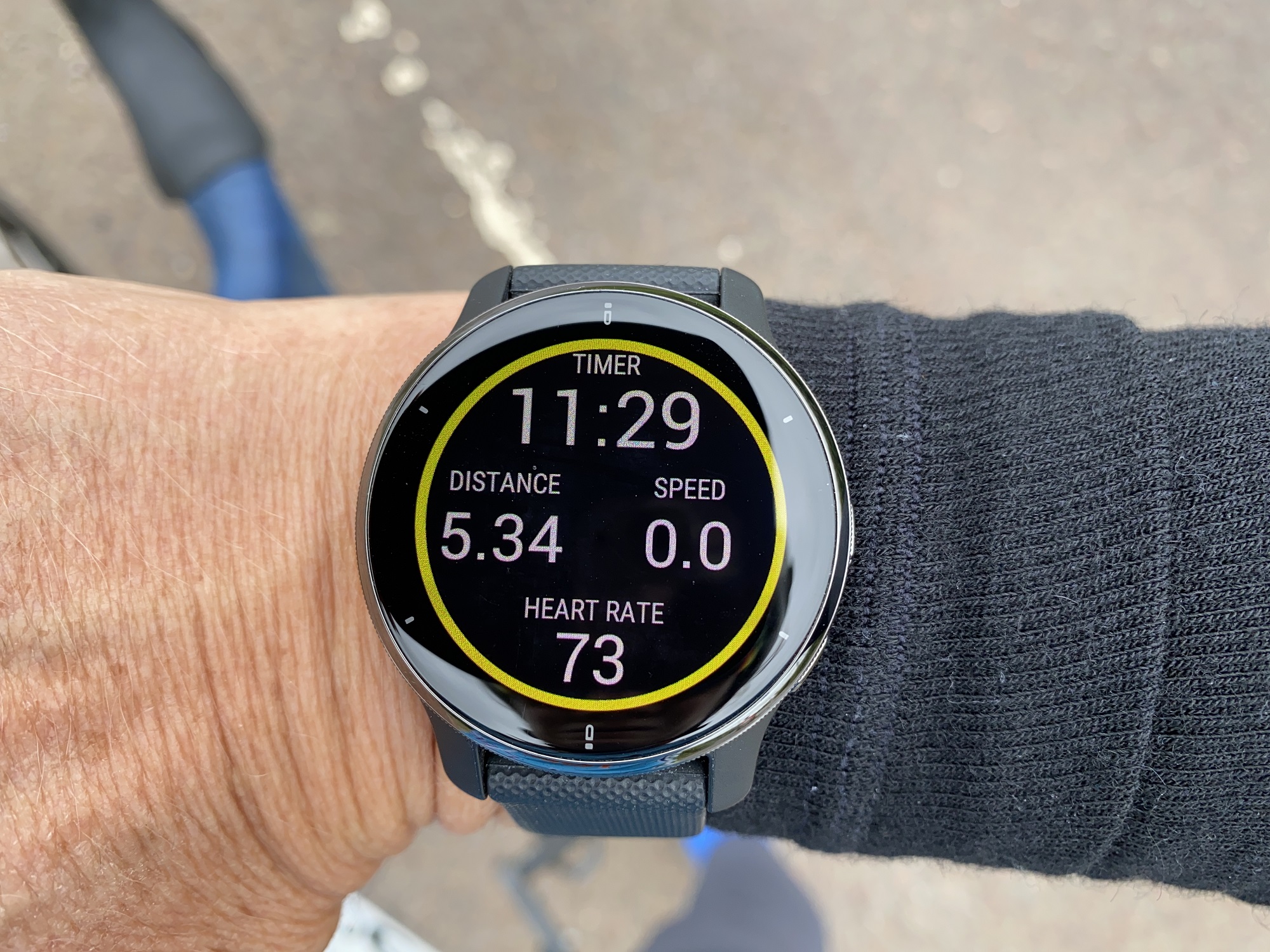
I’d say that the time to pick up a GPS signal, and sensitivity to you stopping (at a junction or lights), is inferior to a GPS specific bike computer. You can be waiting a minute or so for it to pick up a signal at the start of an activity, and the vibration (or beep) to indicate a pause in recording can come several seconds after you’ve stopped. The actual tracking is good, I’ve noted no discrepancies in overall routing when compared to other GPS devices that I’ve run alongside the Garmin Venu 2 Plus.
It’s possible to create your own workouts for several different disciplines, based on a variety of metrics, which can then be sent to the phone. For those without a smart trainer this can add structure to an indoor ‘spin’ on rollers or a turbo trainer.
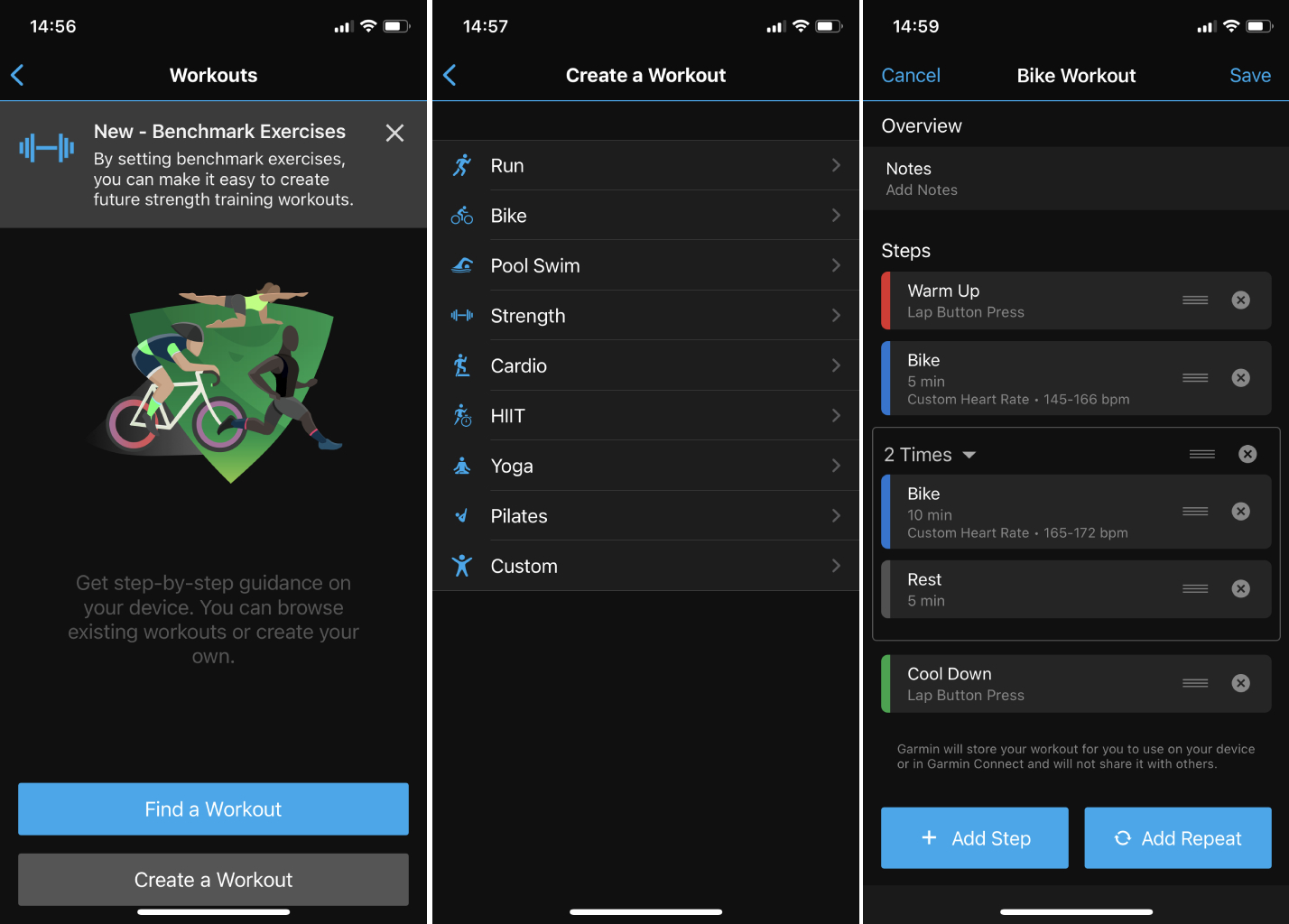
Post-ride analysis is instantaneously accessible on the Venu 2 Plus and Garmin can’t be faulted for detail here. There’s everything you can think of, the watch will also tell you when your heart rate has recovered and notify you of any personal records. All the metrics sync to the app for you, adding detail and editing is possible too.
Sharing with other platforms is optional, so Strava, TrainingPeaks, Komoot (for routes) and Apple Health are all entertained.
If you opt not to record a ride or a run, the watch (Move IQ) will still detect movement and an icon will mark this on your heart rate timeline, you simply won’t have the full range of data linked to it, just the impact on the lifestyle analysis (as it’s registers the rise in HR).

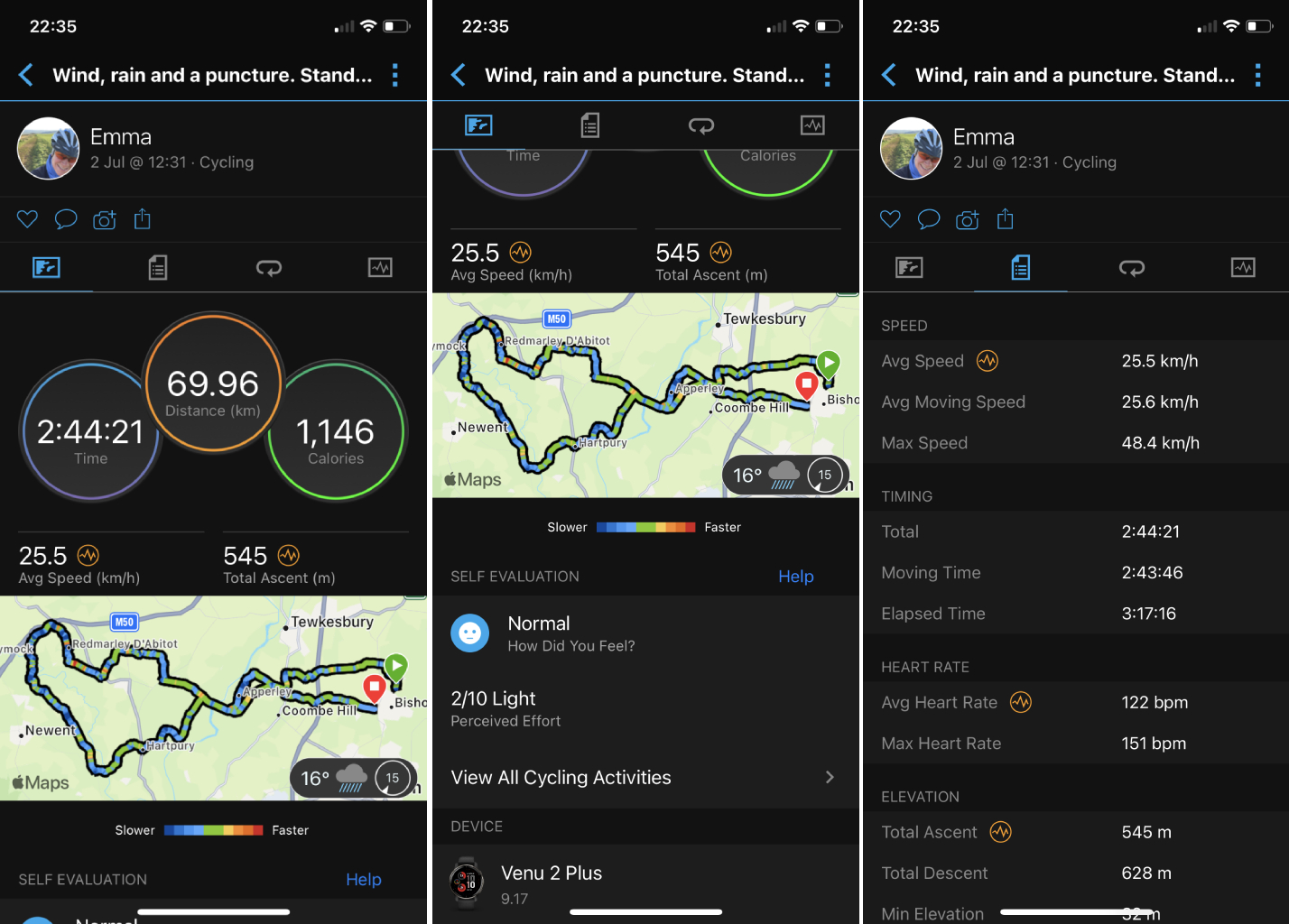
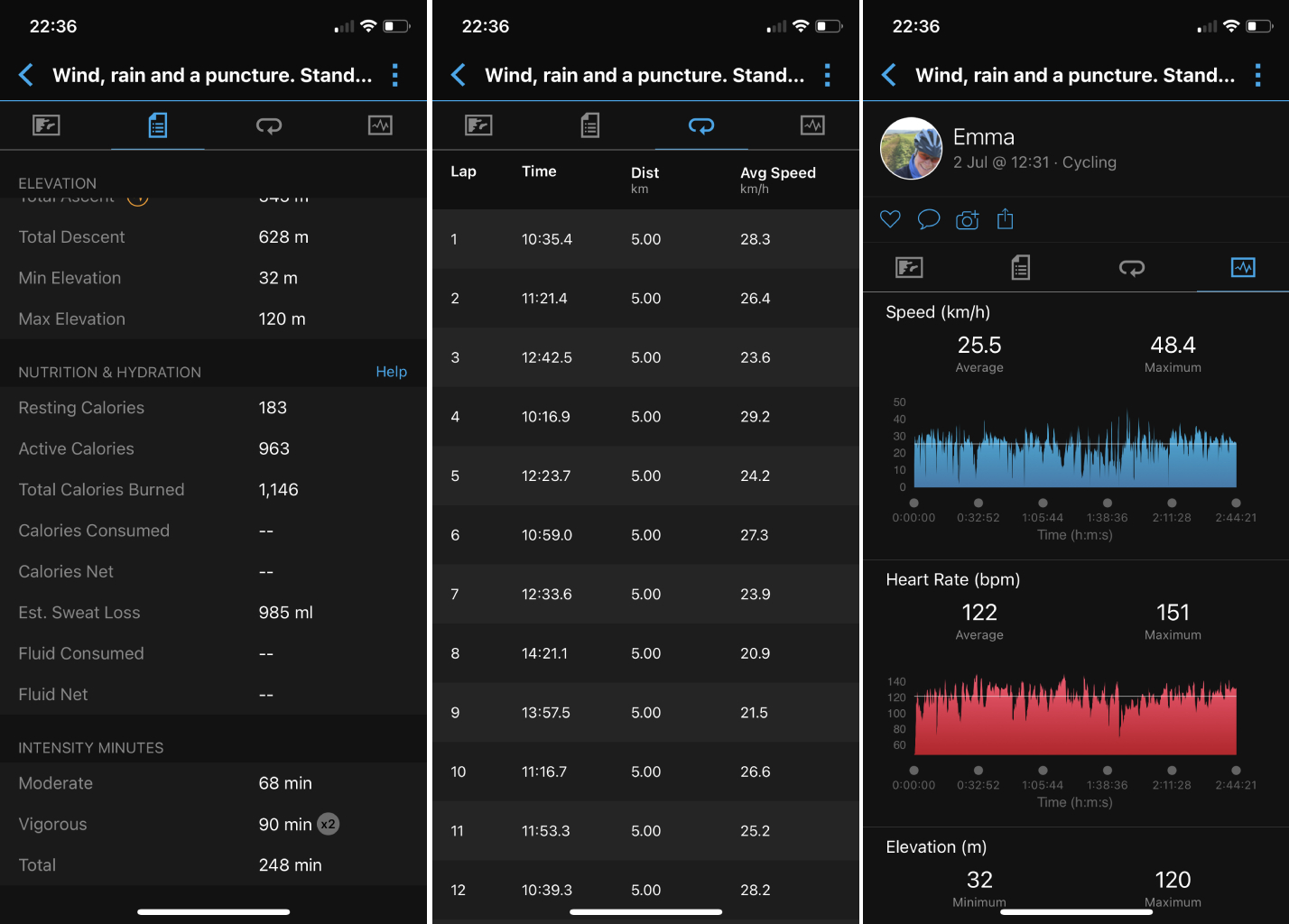
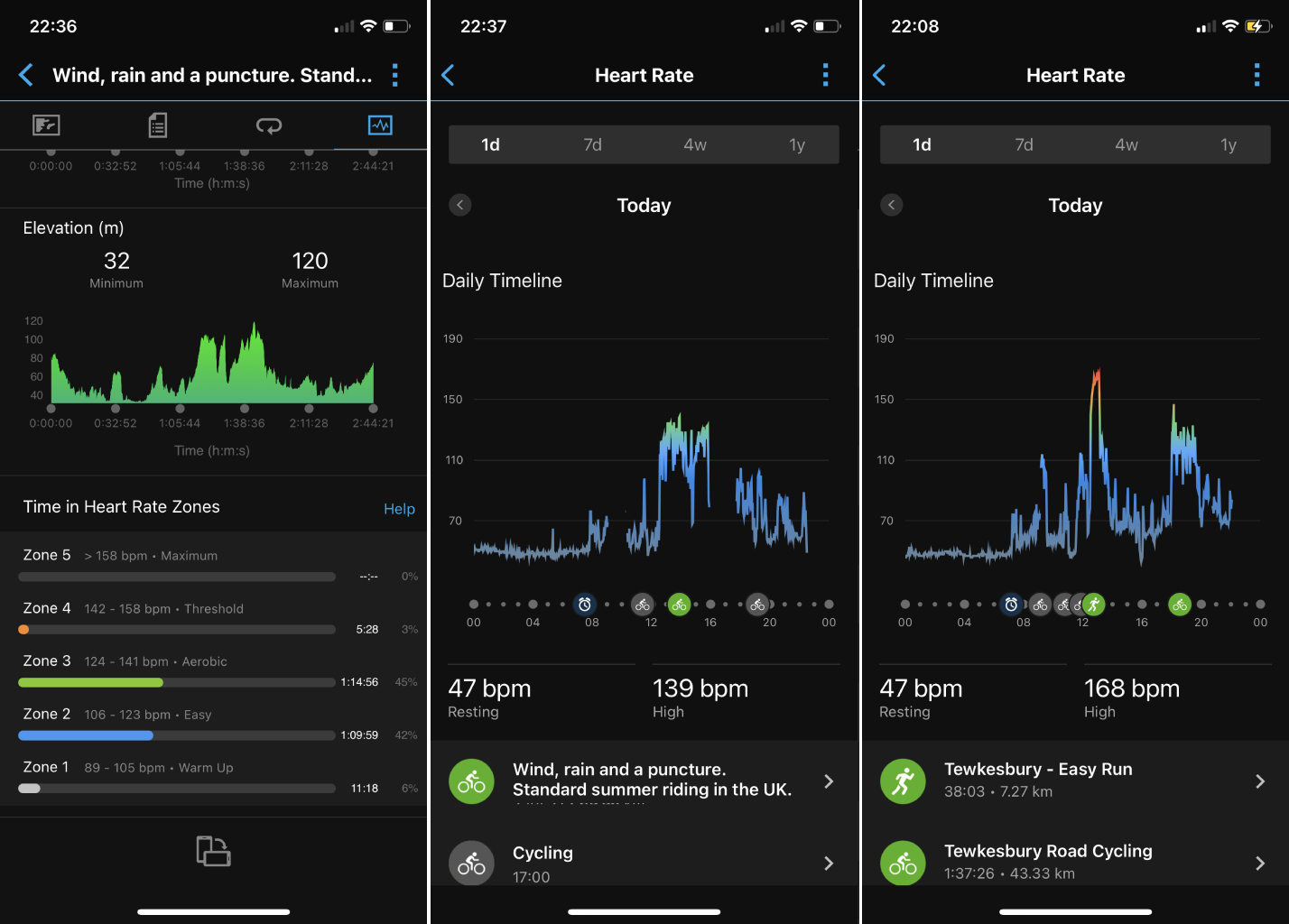
Pre-loaded strength, yoga, pilates and HIIT workouts are a bit of minefield - there are 80+ options that can be sent to the watch - it would take a hell of a long time to explore all of these, add to that all the ones in the IQ store... you certainly won't get bored of doing the same thing day-in-day-out.
If you value core work and have an exercise mat or something similar at home, scheduling (in the calendar) any of these sessions might well appeal. The watch times sets, with vibrations (or beeps) marking the end of each. On-screen animations show how it’s done, as well as the muscle groups used. Clarity and definition is impressive given the screen size.
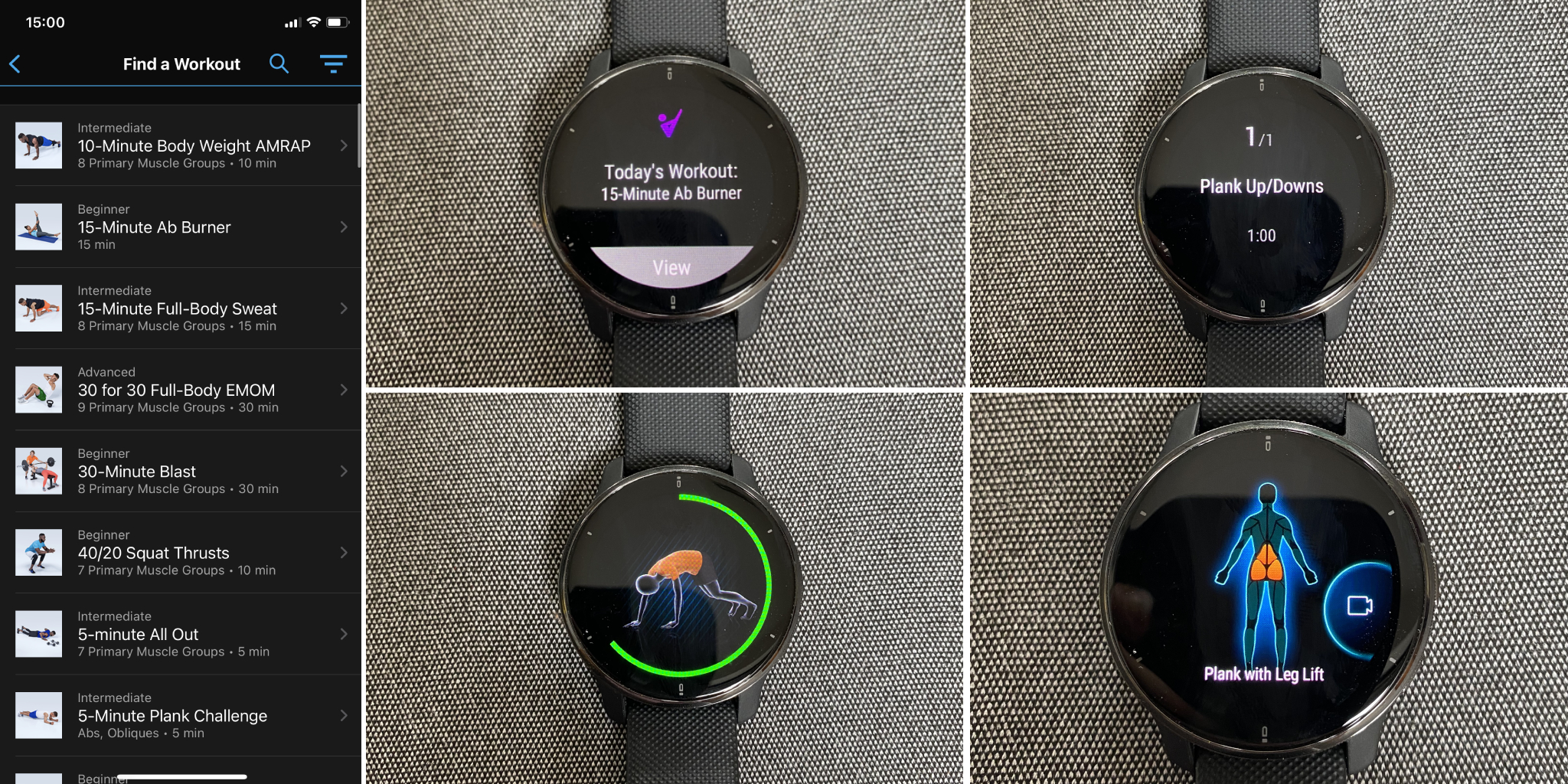
GARMIN COACH
I’ve been making use of Garmin Coach on the Venu 2 Plus, something I didn’t explore so much on the FR945. Profiles of coaches are provided and you select your preferred one to prepare you for a specific goal/distance (5k, 10k, half or full marathon) over your preferred timescale.
Having previously been in a running club, I’ve encouragingly found myself in familiar territory with ‘progression runs’ and ‘stride repeats’. I’m about six weeks into a plan and definitely feel that things are improving. Being able to dictate the frequency and days on which you want to train adds further structure. The watch times intervals and subtle but easily sensed vibration bursts count you down into each rep or set. It’s a great feature that any novice or enthusiastic amateur will enjoy exploring and using.
Analysis is as comprehensive as with the cycling, either on the watch, or in the app.
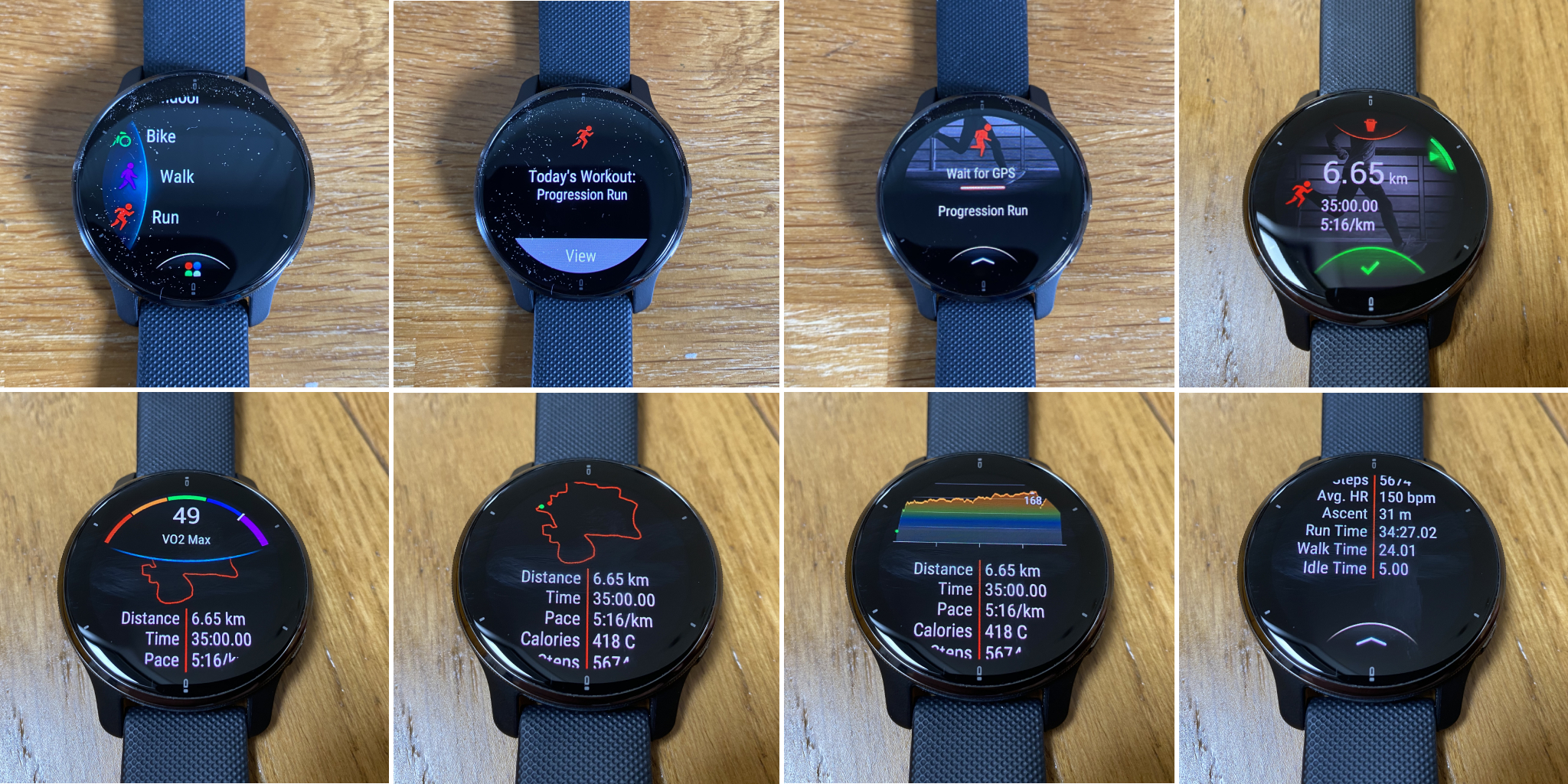
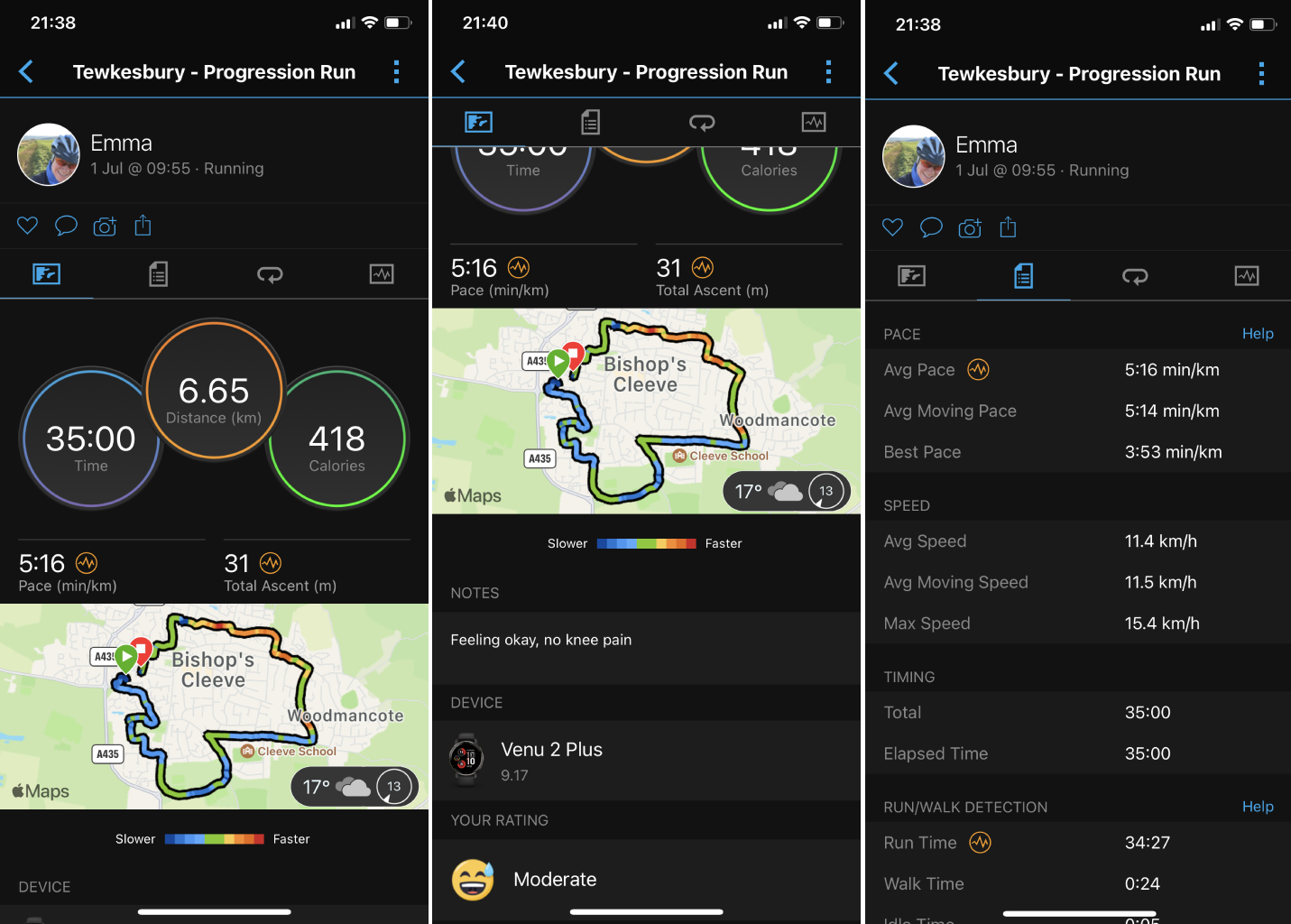
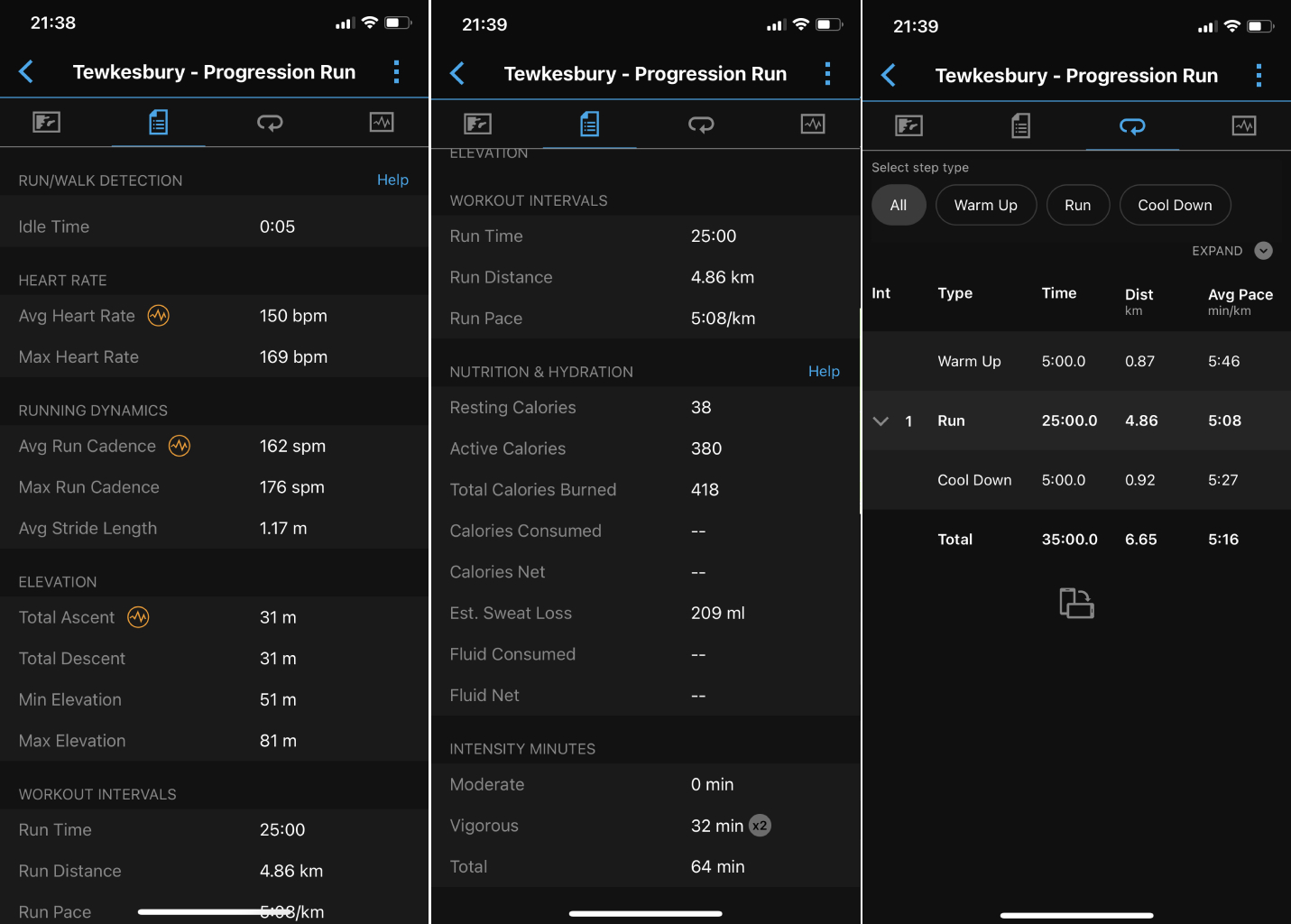
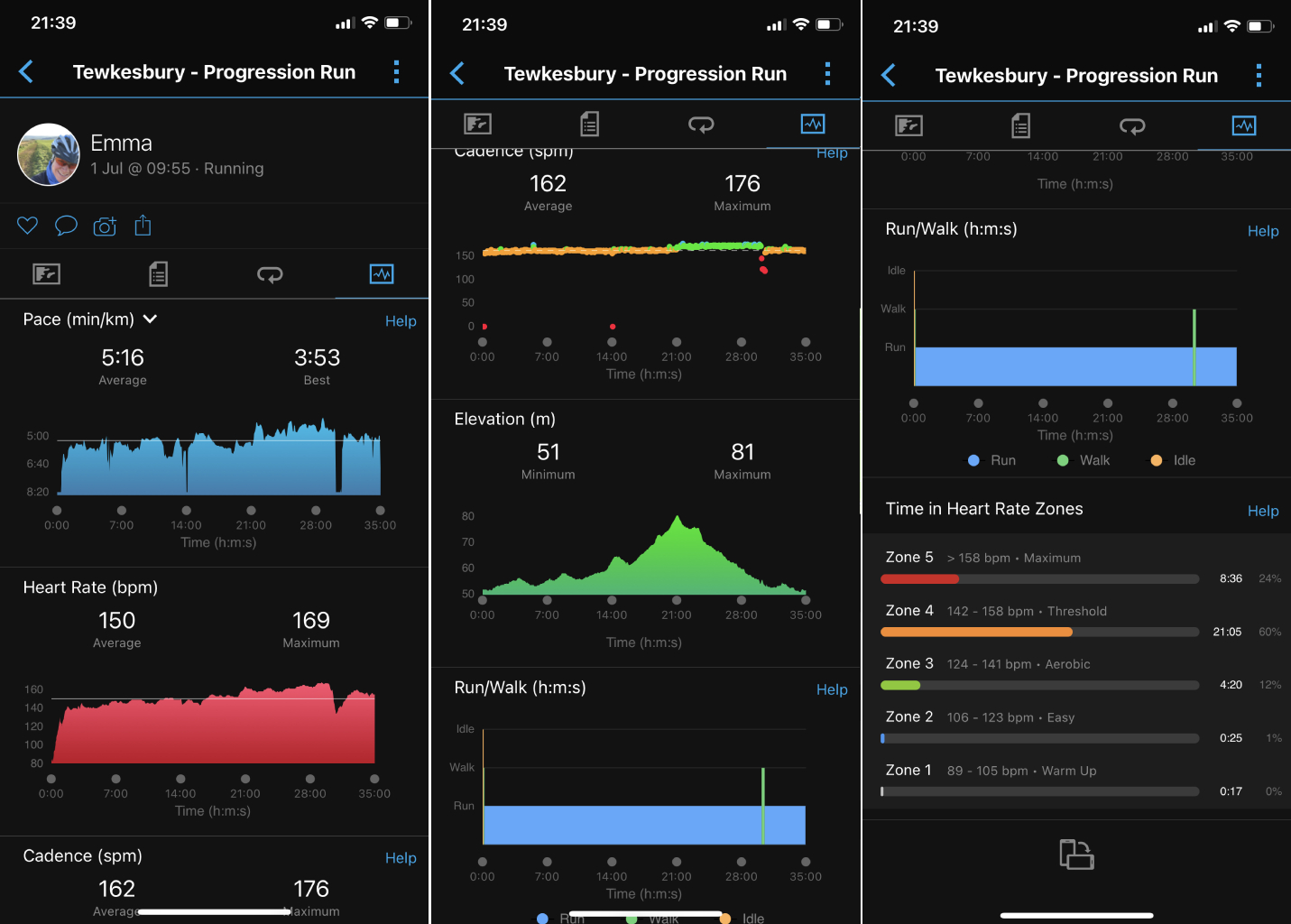
LIFESTYLE
Garmin cleverly pulls all your data together to provide constant feedback. You can track so many aspects of your day-to-day routine on the watch that there's a genuine risk of obsession! Sleep, steps, stairs, hydration, calories, body battery and menstrual cycle are just some of the aspects it'll monitor, naturally there's some input required by the user in some cases. Customisation is key here, so that you are not presented with heaps of data that isn't of interest to you.
For me, all smartwatch sleep data should be taken with a pinch of salt, the Venu 2 Plus is no exception; it’s had me sleeping when I’ve been watching a film late at night, and awake in the morning when I’ve been enjoying a lazy lie-in. On the whole though, what I see in a morning tends to tally with how I feel I’ve slept.
Menstrual tracking is a useful if you want to peak for an event, working with your cycle can really help here. Equally, it provides details about the phase of your cycle with an easy to interpret calendar highlighting these.
I personally prefer to view much of the day-to-day metrics in the app (rather than with the Glances I've already discussed), it’s simply less strain on the eyes. There's a collapsed view option, from where you can delve into individual fields (as I've done with 'steps' and 'heart rate' here), or an expanded view to scroll through.


SMART FEATURES
By adding a microphone and speaker to the Venu 2, Garmin have created an ‘all-singing-all-dancing’ smartwatch in the Venu 2 Plus, something to compete with the likes of Apple. And there's good news, the sound isn’t actually that bad - a very promising start given this is Garmin’s first ever watch to let you to talk into your wrist. It bodes well for future models.
It doesn’t just enable you to make and receive calls though, it also enables Voice Assistant (Apple Siri, Google Assistant, Samsung Bixby), plays music via the speaker and permits Assistance/Incident Detection calls to a pre-set emergency contact.
I’m not a massive user of voice assistant, with or without a watch, but it’s worked as it should (I tried with Siri and Bixby), with results naturally being dependant on how smart your voice assistant is!
While I’d rather make and receive calls on my phone, testing it has been fun; it’s a convenient alternative when you can’t get your hands directly on your phone (be it ‘hidden’ in the house, buried at the bottom of a bag or tucked away in a bike bag). It takes a little setting up, though this is probably just me adjusting to the unfamiliar.
The contacts list is created in the Garmin Connect App using your main contacts list, this nicely limits scrolling through hundreds of contacts on the watch face. Sound quality is not ground-breaking but it’s perfectly good enough to conduct a conversation.
Any music stored (offline) on the Venu 2 Plus can be played through the speaker, though I’m not sure many people will opt to be doing this on a regular basis, perhaps just a new music share or an emergency scenario of your headphones running out of charge. It’s a nice backup for when you don’t have your phone to hand and, again, the sound is perfectly acceptable. Up to 650 songs can be stored on the Venu 2 Plus.
With many of Garmin’s existing devices, in the case of an emergency, you can trigger a text message to a saved contact. The Venu 2 Plus has the ability to make a call, either to a contact or the emergency number in your country (999, 911, etc…). Naturally you need Bluetooth connectivity and you are then required to speak, but it’s still a great feature considering the circumstances you could find yourself in (potentially unable to reach your phone). This call (or default text if you wait five seconds) can be triggered in three different ways: manually from controls menu; with a long hold of the upper right button; automatically after a detected crash (customised by you in certain sport profiles).
VALUE
On the face of it, £399/$449.99 is a lot to fork out, but I’d argue that the Garmin Venu 2 Plus gives you a lot for your money, just be sure that you are going to make use of the majority of it.
Alternatives include the Apple Watch Series 7, it’s £30 cheaper but the sports/fitness features are significantly dialled down by comparison.
Wahoo’s £299 Elemnt RIVAL won’t offer the advanced smart technology, or the range and depth of activities, but that might not be such a bad thing if you are easily overwhelmed.
Testing smart watches and GPS computers is becoming increasingly challenging and time consuming; there are so many aspects to cover and missing a valuable function or feature is easily done. This alone, in my mind, goes a huge way to justify the RRPs, providing the features and functions actually do what they are designed to, and do it well. In the case of the Venu 2 Plus, it does: it shines where fitness/sporting functions are concerned and the addition of a microphone and speaker to enable advanced smart functions has been well-executed by Garmin. It's possible that improvements come in subsequent revisions, so holding out for an upgrade or investment might be a wise choice. The good news is, if you don't want to hold out, the Venu 2 Plus is actually on sale at £299 in some outlets as I finish this review!
SPECIFICATIONS
- Physical size: 43.60 x 43.60 x 12.60 mm. Fits wrists with a circumference of 125-190 mm
- Display Size: 1.30″ (33.0 mm) diameter
- Display Resolution: 416 x 416 pixels
- Display Type: AMOLED; optional always-on mode
- Weight: 51.0 g
- Battery life: Smartwatch mode: Up to 9 days; Battery saver smartwatch mode: Up to 10 days; GPS mode with music: Up to 8 hours; GPS mode without music: Up to 24 hours.
- Connectivity: Bluetooth®, ANT+®, Wi-Fi®
- Music storage: Up to 650 songs
- Available run profiles: Running, Indoor Track Running, Treadmill Running
- Available cycling profiles: Biking, Indoor Biking
- Available swim profiles: Pool Swimming
- Water rating: 5 ATM (withstands pressures equivalent to a depth of 50m).
Emma’s first encounters with a bike were in between swimming and running. Soon after competing for GB in the World Age Group Triathlon Championships in Edmonton in 2001 she saw the light and decided to focus on cycling.
With a couple of half decent UK road seasons under her belt, she went out to Belgium to sample the racing there, spending two years with Lotto-Belisol Ladies team, racing alongside the likes of Sara Carrigan, Grace Verbeke, Rochelle Gilmore and Lizzie Deignan. Emma moved from Lotto-Belisol to Dutch team Redsun, working primarily as a domestique for Emma Johansson. When Redsun folded, Emma was offered the opportunity to ride with a newly formed Belgian team and home to the first year senior and budding rider Anna Van Der Breggen.
After retiring, Emma returned to teaching, setting up her own tutoring business. When not coercing kids to do maths, she is invariably out on two wheels. While the road bike remains her true passion, she has also developed an addiction to touring, with destinations including Iceland, Georgia and Albania, to mention just a few. There have also been sightings of Emma off-road, on mountain and gravel bikes… As if all of this isn't enough, she's been working as a freelancer since 2005, testing and reviewing the latest kit and sharing her insight into the sport.